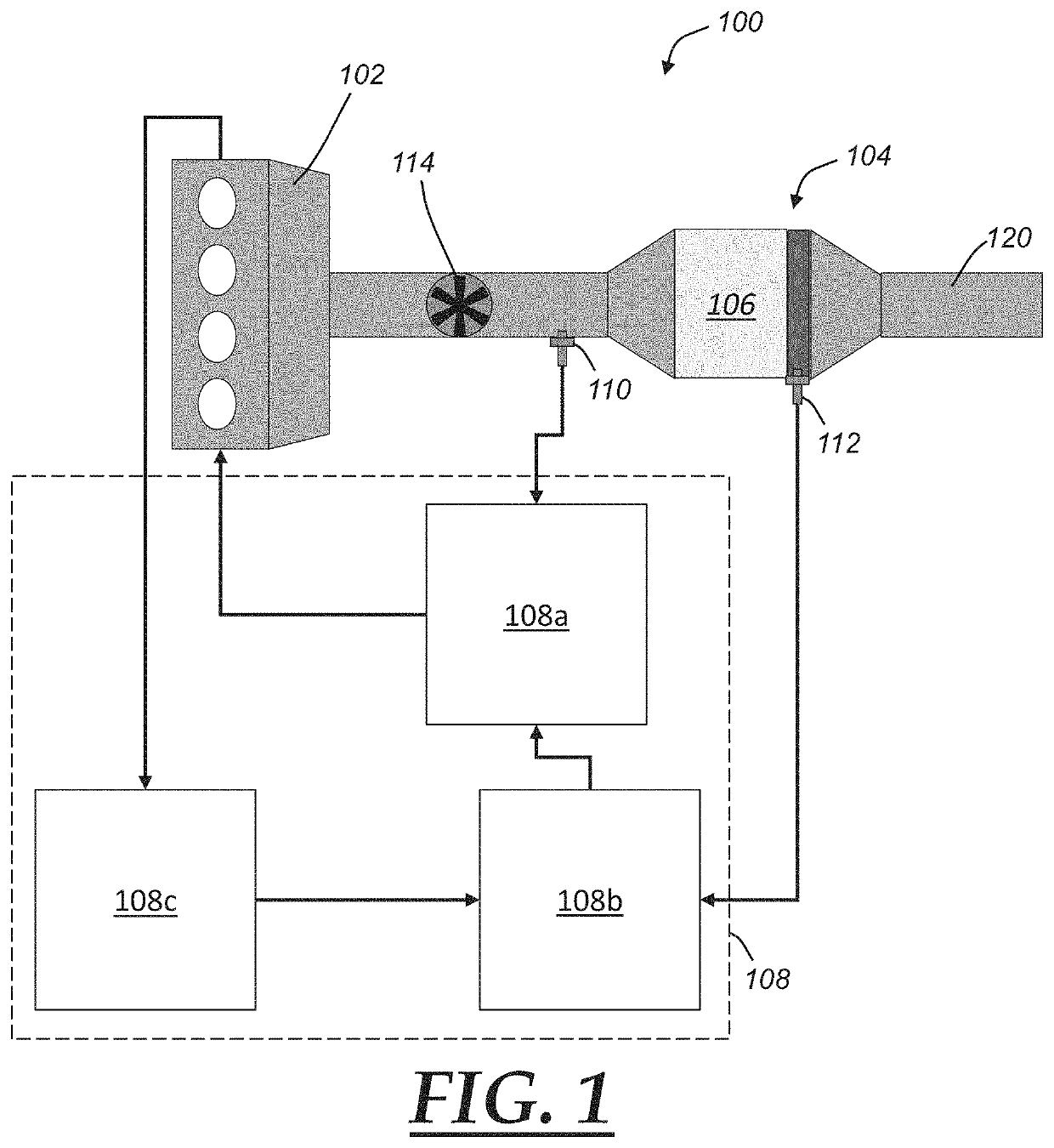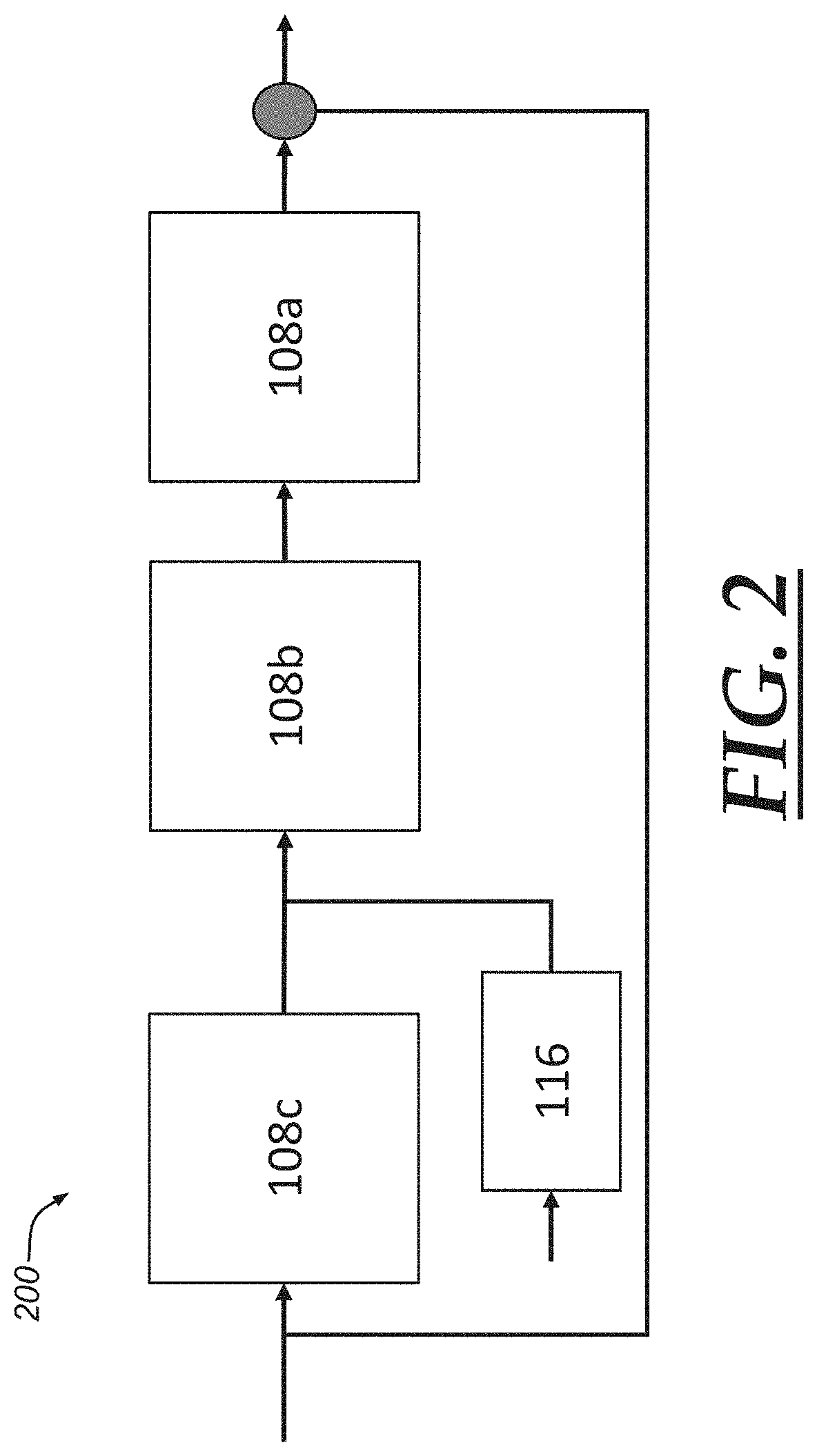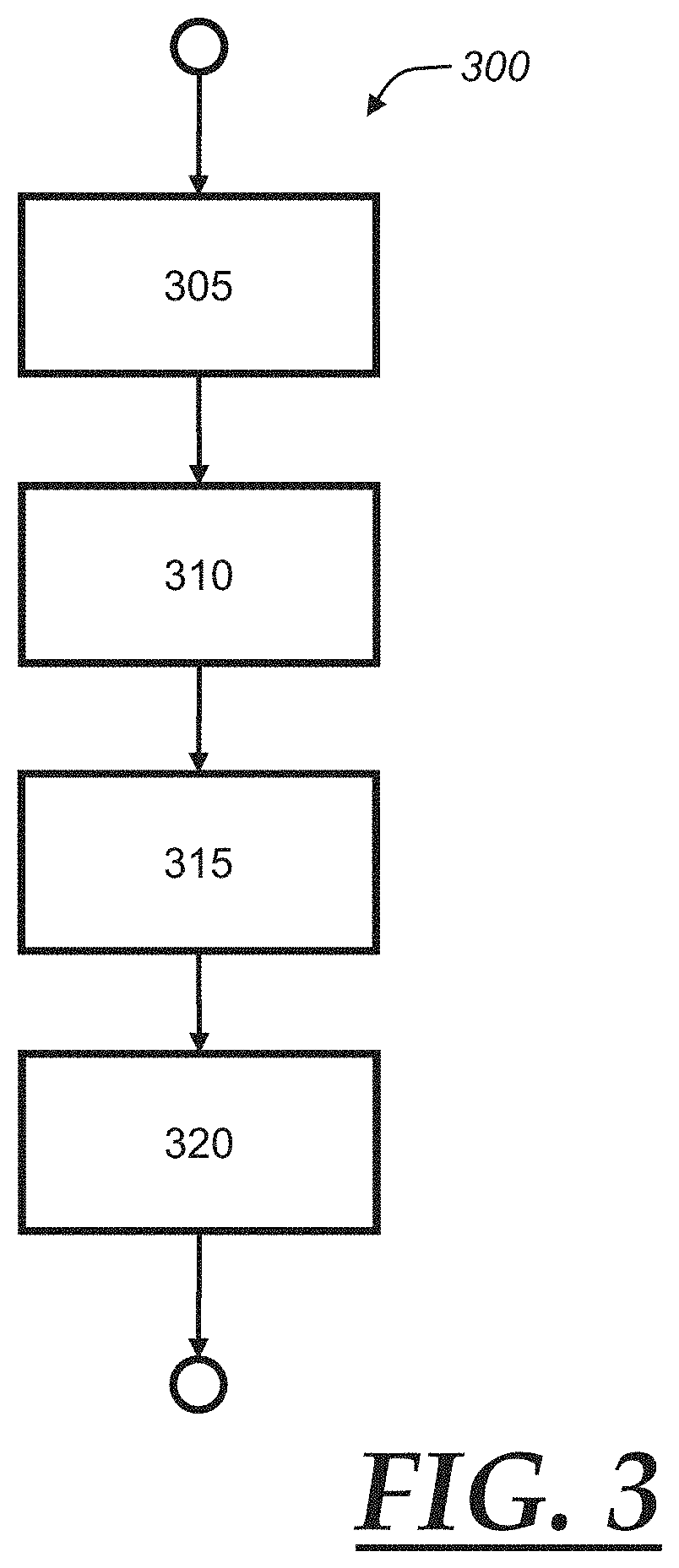NOX formation prediction for improved catalytic converter control
a technology of nox formation and control, applied in the direction of electric control, machines/engines, separation processes, etc., can solve problems such as exhaustion of the environment, and achieve the effect of reducing nox concentration
- Summary
- Abstract
- Description
- Claims
- Application Information
AI Technical Summary
Benefits of technology
Problems solved by technology
Method used
Image
Examples
Embodiment Construction
[0022]Example methods and exhaust systems for a vehicle may generally employ a predictive approach with respect to changes in NOx levels or concentrations in a catalytic converter. More particularly, one or more real-time vehicle operating parameters may be used to predict deviations, e.g., expected increases, in NOx production. In some example approaches, a model trained with emission lab data may be used to proactively predict high NOx formation situations in the engine based upon the real-time operating parameters. Accordingly, when a high likelihood of increased NOx formation is predicted, proactive measures may be taken to reduce NOx emissions. In some examples that will be discussed further below, an example processor may send a signal based on the predicted increase in NOx formation, and the signal may be used to adjust engine operating conditions, e.g., an air-fuel ratio of the engine. As a result, the predicted increase in NOx formation is at least partially reduced, or eve...
PUM
 Login to View More
Login to View More Abstract
Description
Claims
Application Information
 Login to View More
Login to View More - R&D
- Intellectual Property
- Life Sciences
- Materials
- Tech Scout
- Unparalleled Data Quality
- Higher Quality Content
- 60% Fewer Hallucinations
Browse by: Latest US Patents, China's latest patents, Technical Efficacy Thesaurus, Application Domain, Technology Topic, Popular Technical Reports.
© 2025 PatSnap. All rights reserved.Legal|Privacy policy|Modern Slavery Act Transparency Statement|Sitemap|About US| Contact US: help@patsnap.com



